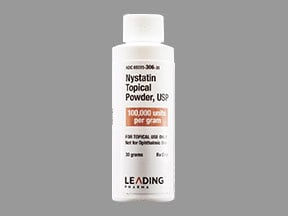
Nystop Coupons & Savings Card – Discount Prices from $6.39
Brand for: Nystatin
My prescription
Edit
15GM of 100000UNIT/GM, Nystatin (1 Bottle)
Select pharmacy

CVS
$19.64
COUPON PRICE
Walmart
$6.39
COUPON PRICE
Albertsons
$8.77
COUPON PRICE
Walgreens
$11.70
COUPON PRICENystop savings card
Show this card to your pharmacist
Walmart
$6.39
BIN
ID
PCN
GRP
019876
LH0D0FD7C1
CHIPPO
LHX
Powered by
Price history for Nystop (brand) & Nystatin (generic)
1 Bottle, 15GM of 100000UNIT/GM
Average retail price for Nystop
Average retail price for Nystatin
Average SaveHealth price for Nystatin
Our price history data is based on aggregated prescription data collected from participating pharmacies in America. Our prescription data updates daily to reflect the latest price changes. If you notice a missing data point, it means there wasn't sufficient data available to generate a monetary value for that date.
Over the last 12 months, the average discount price of Nystop is $11.82 using the SaveHealth savings card. That's an average savings of 55.50% on Nystop with our discount card.
*Retail prices are based on pharmacy claims data, and may not be accurate when we don't have enough claims.
Nystop (Nystatin) dosage forms
Dosage Quantity Price from Per unit 15GM of 100000UNIT/GM 1 Bottle $6.39 $6.39 15GM of 100000UNIT/GM 2 Bottles $10.29 $5.14 15GM of 100000UNIT/GM 3 Bottles $14.18 $4.73
| Dosage | Quantity | Price from | Per unit |
|---|---|---|---|
| 15GM of 100000UNIT/GM | 1 Bottle | $6.39 | $6.39 |
| 15GM of 100000UNIT/GM | 2 Bottles | $10.29 | $5.14 |
| 15GM of 100000UNIT/GM | 3 Bottles | $14.18 | $4.73 |
Nystop Warnings
This drug safety information provides key warnings and precautions related to the use of nystatin topical. It is essential to follow these guidelines to ensure safe and effective use of the medication. Consult your healthcare provider for any questions or concerns.
Allergic Reactions: If you have previously experienced an allergic reaction to nystatin, inform your healthcare provider before using the topical form. Be vigilant for symptoms such as swollen skin, rash, itchiness, or other skin irritations. Discontinue use immediately and contact your provider if these symptoms occur. Seek urgent medical attention if you experience severe swelling or difficulty breathing.
Application Instructions: Nystatin topical is intended solely for application on the skin to treat specific yeast infections. Avoid using this medication in your eyes, nose, mouth, ears, or vagina. In case of accidental ingestion by you or a child, promptly contact the Poison Control Center at 1-800-222-1222.
There are no known contraindications for this medication. Always adhere to your healthcare provider’s instructions when using nystatin topical.
Nystop Side Effects
When using this medication, some individuals may experience mild side effects such as skin irritation, redness, burning, itching, or a rash. Eczema, characterized by dry and bumpy skin, and pain at the application site can also occur. Typically, these side effects are temporary and mild. However, if they persist or become bothersome, it is advisable to consult your healthcare provider for guidance. In rare instances, more serious side effects can develop, which require immediate medical attention. These include severe allergic reactions that might present as a rash, hives, or swelling of the face, lips, tongue, or throat. Additionally, if you encounter symptoms such as chest tightness, trouble breathing, or severe skin reactions like redness, blistering, peeling, or loosening of the skin, including inside the mouth, seek urgent medical care. While these severe reactions are uncommon, it is important to be aware of them and to take prompt action if they occur. Always monitor your body's response to the medication and communicate any concerns with your healthcare provider to ensure your safety and well-being.
Nystop Interactions
What is Nystop powder used for?
Nystop powder is used to treat fungal skin infections, such as athlete's foot, jock itch, and ringworm. It works by stopping the growth of fungus on the skin.
What skin conditions does nystatin treat?
Nystatin is used to treat skin infections caused by Candida species, such as cutaneous candidiasis. It is effective against fungal infections but not against bacterial or viral skin conditions.
What is the difference between nystatin and Nystop?
Nystatin is an antifungal medication used to treat fungal infections, particularly those caused by Candida species. Nystop is a brand name for a topical form of nystatin. Essentially, Nystop is a specific formulation of nystatin intended for topical use, such as in the treatment of skin infections. The active ingredient in both is the same, but the form and application may differ.
Can you get Nystop over the counter?
Nystop, which contains the antifungal medication nystatin, is not available over the counter. It requires a prescription from a healthcare provider.
Where should nystatin cream not be used?
Nystatin cream should not be used in the eyes, mouth, or on areas of broken skin. It is intended for external use only and should be applied only to the affected skin areas as directed by a healthcare provider.
